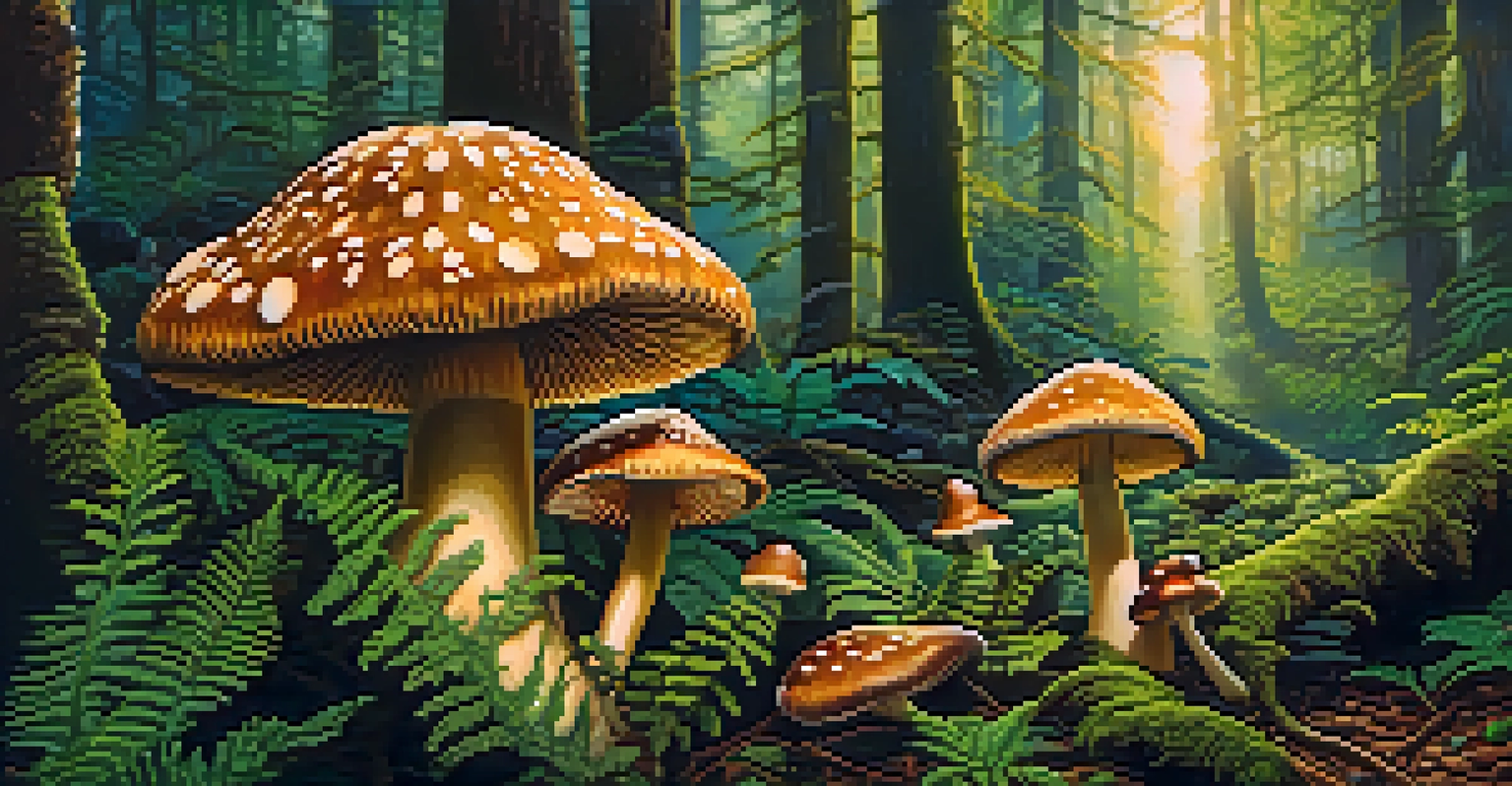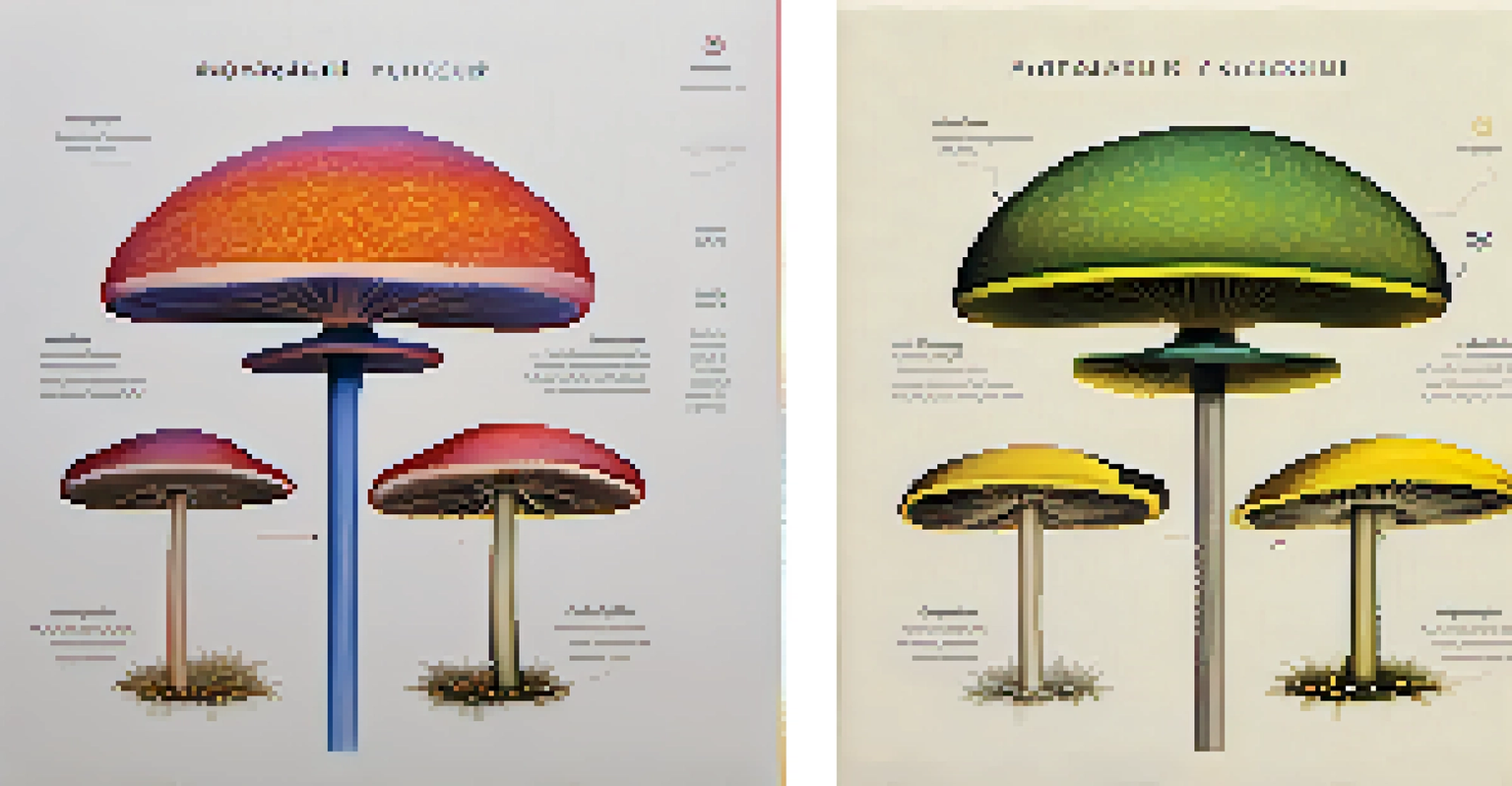Chemical Composition: Peyote versus Psilocybin Mushrooms

Understanding Peyote: The Basics
Peyote is a small, spineless cactus known scientifically as Lophophora williamsii. This plant has been used for centuries in Native American spiritual practices. The primary psychoactive compound in Peyote is mescaline, which is responsible for its hallucinogenic effects.
The greatest discovery of my generation is that a human being can alter his life by altering his attitudes.
Mescaline works by interacting with serotonin receptors in the brain, particularly the 5-HT2A receptor. This interaction produces alterations in perception, mood, and consciousness. Beyond its psychoactive properties, Peyote has a rich cultural significance, often being viewed as a sacred medicine.
Related Resource
In terms of chemical structure, mescaline is an alkaloid with a relatively simple molecular structure, consisting of a phenethylamine backbone. This makes it structurally different from the compounds found in Psilocybin mushrooms, setting the stage for a fascinating comparison.
The Role of Psilocybin Mushrooms
Psilocybin mushrooms, commonly known as magic mushrooms, contain the psychoactive compound psilocybin. This compound is converted into psilocin in the body, which then affects the brain in a manner similar to mescaline. However, the experience and effects can vary significantly between the two substances.

Psilocybin also interacts with serotonin receptors, but it does so in a more complex way, often leading to different types of visual and auditory hallucinations. Users frequently report feelings of interconnectedness and emotional release, which can be profoundly therapeutic.
Psychoactive Effects of Peyote
Peyote, containing mescaline, induces vivid visual experiences and emotional introspection, often lasting longer than those from psilocybin.
Chemically, psilocybin and psilocin are more complex than mescaline, with additional functional groups that influence their effects. This complexity contributes to the unique experiences associated with psilocybin mushrooms, making them a popular choice for both recreational and therapeutic use.
Comparative Chemical Structures: Peyote vs. Psilocybin
When we look at the chemical structures of mescaline and psilocybin, we see distinct differences. Mescaline's structure is relatively straightforward, while psilocybin has a more complex arrangement, which can impact its effects on the brain. This complexity is partly responsible for the different experiences users report.
Psychedelics are a tool for understanding the mind and the universe, a bridge to higher consciousness and deeper connection.
While both compounds share some similarities as they belong to the phenethylamine and tryptamine families, the additional components in psilocybin allow it to induce a broader range of effects. For instance, while mescaline is often described as more visual, psilocybin can provoke deep emotional and existential insights.
Related Resource
Understanding these differences in chemical structures helps us appreciate why users may prefer one over the other. It also highlights the importance of context, setting, and individual biochemistry in shaping the psychedelic experience.
Effects on the Human Brain: A Comparison
Both Peyote and psilocybin mushrooms have profound effects on the human brain, yet the experiences they elicit can differ. Mescaline tends to create vivid visual disturbances and intense emotional experiences, typically lasting longer than those induced by psilocybin. Users may find that Peyote leads to a more introspective journey.
Conversely, psilocybin is often associated with more dynamic shifts in perception and thought patterns. Many users report an increased sense of connection to their surroundings and a feeling of unity with nature. This can lead to a therapeutic experience, particularly in controlled settings.
Cultural Significance of Both
Both Peyote and psilocybin mushrooms have deep cultural roots, with Peyote being integral to Native American ceremonies and psilocybin gaining renewed interest for therapeutic uses.
The duration of effects also varies, with mescaline lasting anywhere from 8 to 12 hours, while psilocybin effects typically last between 4 to 6 hours. This difference in duration can play a significant role in choosing which substance to use for specific experiences.
Cultural Significance of Peyote and Psilocybin
Culturally, Peyote has deep roots in Native American traditions, where it has been used for centuries in religious ceremonies. It is often seen as a tool for spiritual awakening and healing, providing insights into one's life and purpose. The cultural significance of Peyote cannot be overstated, as it is protected under certain laws in the U.S. for spiritual use.
Psilocybin mushrooms also have a rich history, though it's less formalized compared to Peyote. Various cultures have used them for spiritual and healing purposes, with a resurgence in interest in recent years for their potential therapeutic applications. This has led to modern studies examining their efficacy in treating conditions like depression and anxiety.
Related Resource
Both substances highlight the intersection of culture and psychoactive experiences, emphasizing their roles in human connection, healing, and personal growth. Understanding this context can enrich our appreciation of their chemical compositions and effects.
Legal Status: Peyote and Psilocybin
The legal status of Peyote and psilocybin mushrooms varies significantly across jurisdictions. In the United States, Peyote is legal for use in specific religious ceremonies under the American Indian Religious Freedom Act. However, outside of these contexts, it remains classified as a Schedule I substance, making it illegal to possess or distribute.
Psilocybin mushrooms are experiencing a shift in legal status, with some cities and states decriminalizing their use. For example, cities like Denver and Oakland have moved to decriminalize psilocybin, recognizing its potential therapeutic benefits. This change reflects a growing acceptance of psychedelics in modern society.
Legal Status Varies by Region
The legal status of Peyote is protected for religious use, while psilocybin is seeing a shift towards decriminalization in certain areas, reflecting changing societal attitudes.
Navigating the legal landscape surrounding these substances can be complex, as laws continue to evolve. It's essential for individuals to stay informed about their local regulations to ensure they engage with these substances safely and legally.
Conclusion: The Journey of Discovery
In summary, both Peyote and psilocybin mushrooms offer unique psychoactive experiences rooted in their distinct chemical compositions. While mescaline provides a more visual and introspective journey, psilocybin tends to facilitate emotional exploration and connection. Understanding these differences allows users to make informed choices about their psychedelic experiences.
As interest in psychedelics grows, so does the importance of responsible use and education. The potential therapeutic benefits of these substances are becoming increasingly recognized, opening doors to new possibilities in mental health treatment. This journey of discovery invites us to explore the complex relationship between chemistry, culture, and consciousness.

Ultimately, whether one chooses Peyote or psilocybin mushrooms, the experiences they provide can lead to profound insights and personal growth. As we continue to navigate the evolving landscape of psychedelics, embracing their potential while respecting their history is key.